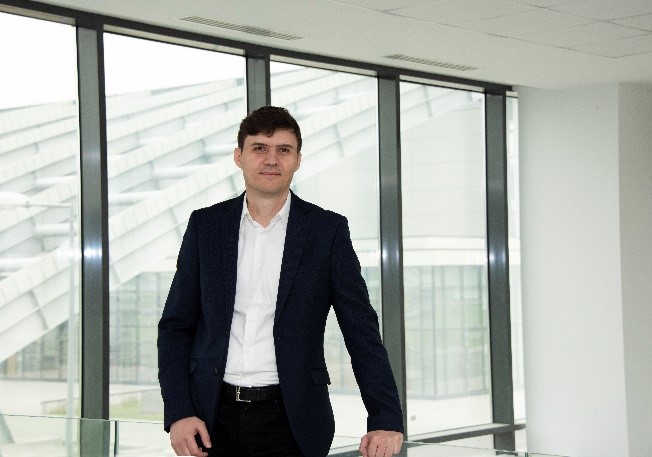
Meet Ovidiu Tesileanu, leader of IMPULSE Work Package 5
Ovidiu Tesileanu is the Head of the Laser Gamma Experiments Department at the ELI-NP facility in Măgurele, Romania. He received his physics degree from the University of Bucharest and completed a PhD in Astrophysics at the University of Turin, Italy, where he focused on early stages of stellar evolution. The potential of ELI-NP for “Laboratory Astrophysics” experiments convinced him to join ELI-NP project early on in 2011. He now leads the theoretical and experimental research using high-power lasers and gamma radiation for imaging techniques and biophysics.

Ovidiu has been involved in the IMPULSE project from the beginning and has been leading Work Package 5, which is focused on establishing User Offices at the ELI Facilities that meet world-class standards. This includes a general User Office at the ELI ERIC with local User Offices at each facility.
“IMPULSE is a complex and very challenging project but the activities serve to complement the research and development activities within ELI, and I see IMPULSE as an amplifier for the starting-up efforts of ELI as a state-of-the-art user facility,” says Ovidiu Tesileanu. “What I like most about IMPULSE is the close cooperation between the personnel at all three ELI facilities on every single level – between researchers, engineers, technical staff, management, and administrative staff.”
The goals of WP5 involve establishing an ELI User Office and an online User Portal, creating a training system for users, and performing experiments to showcase the infrastructure’s capabilities. Ovidiu notes that these goals require close collaboration between all ELI Facilities, with the most challenging aspect being the development of unified policies and processes related to user access.
“Science is now global, and infrastructures need to collaborate and work globally,” adds Ovidiu. “IMPULSE is already demonstrating its importance for improving collaboration and making ELI more than the sum of the Facilities but a world-class infrastructure possessing not only the scientific but also the technical and administrative capacity to push further the frontiers of science.”